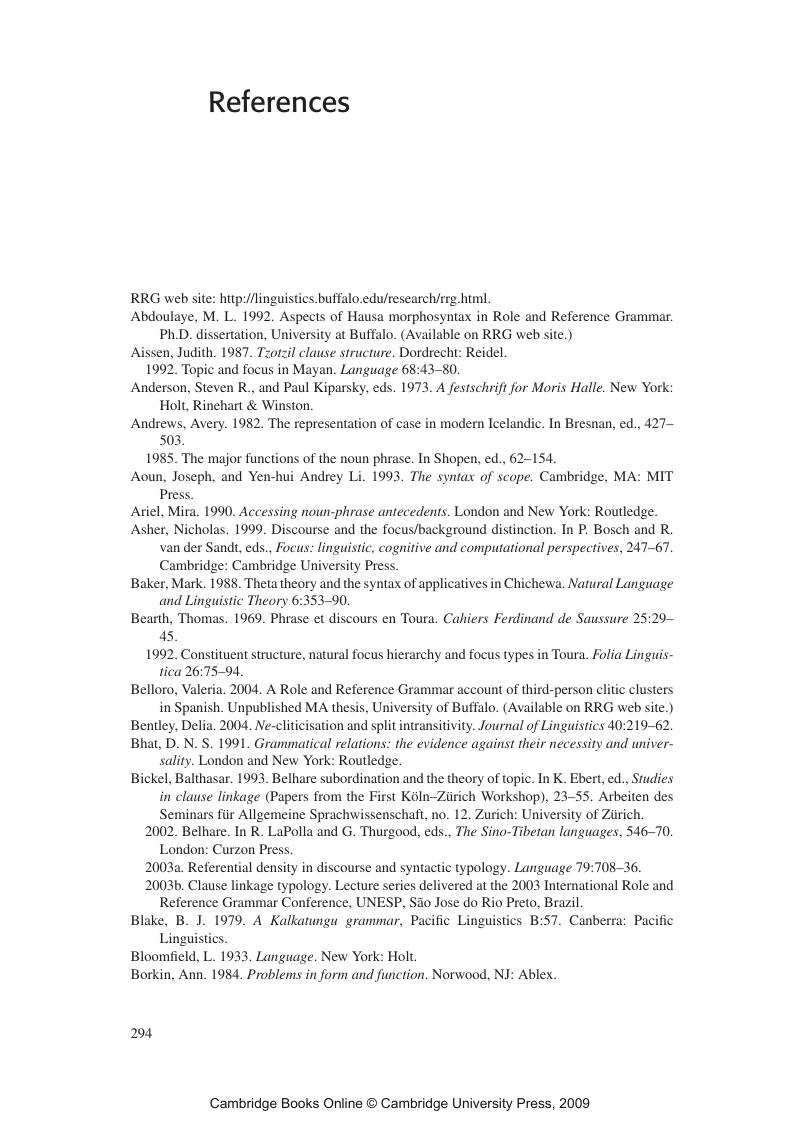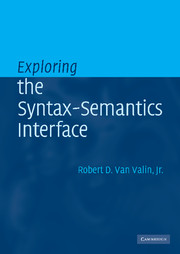Book contents
- Frontmatter
- Contents
- List of figures
- List of tables
- Preface
- List of abbreviations
- Introduction
- 1 Syntactic structure
- 2 Lexical representation and semantic roles
- 3 Information structure
- 4 Syntactic relations and case marking
- 5 Linking syntactic and semantic representations in simple sentences
- 6 The structure of complex sentences
- 7 Linking syntax and semantics in complex sentences
- References
- Languages index
- Subject index
- References
References
Published online by Cambridge University Press: 18 December 2009
- Frontmatter
- Contents
- List of figures
- List of tables
- Preface
- List of abbreviations
- Introduction
- 1 Syntactic structure
- 2 Lexical representation and semantic roles
- 3 Information structure
- 4 Syntactic relations and case marking
- 5 Linking syntactic and semantic representations in simple sentences
- 6 The structure of complex sentences
- 7 Linking syntax and semantics in complex sentences
- References
- Languages index
- Subject index
- References
Summary

- Type
- Chapter
- Information
- Exploring the Syntax-Semantics Interface , pp. 294 - 303Publisher: Cambridge University PressPrint publication year: 2005

